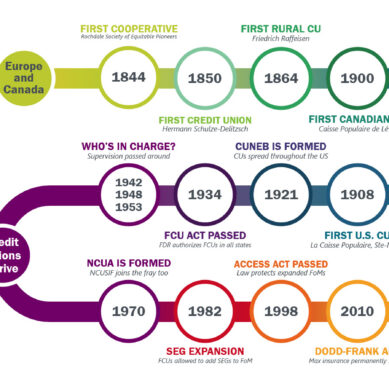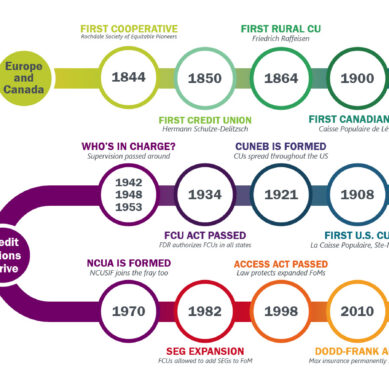Credit unions are under constant pressure to retain customers, especially younger generations who are happy to switch primary accounts. Rather than adding yet another product aimed at younger cohorts, smart financial institutions are capitalizing on their scam and fraud prevention systems, using them to build strong competitive differentiators that drive better customer experiences and even brand-building opportunities.
As fraud grows, customers’ trust in their financial institutions is being systematically eroded. The 2024 Scamscope report shows that 25% of scam victims will abandon their current financial institution, and a further 20% will close their accounts without opening new ones.
The days of remaining loyal to your financial institution no matter what are over, and this is especially true amongst younger generations. These cohorts are more likely to unbundle their banking services, moving away from the traditional trend of relying on a single primary financial institution for all financial needs, towards using multiple providers for various services.
In fact, the younger generation seems to be thoroughly underwhelmed by their credit unions’ current performance. A recent survey from Glassbox, a customer intelligence platform working with 60% of US banks, reported that almost a third of Gen Z feel that their banks and credit unions are not meeting their service expectations.
The study also showed that in addition to more flexible payment options, 55% of respondents wanted stronger mobile security features, while 45% were looking for real-time spending alerts and budgeting tools.
Underwhelmed and underserved
With demands for better service, digital offerings, and personalized experiences, it’s clear that the overall customer experience now plays a crucial role in acquisition and retention. But all of these must be underpinned by security that will not only keep younger members safe but also enable better, more immediate services that will set credit unions apart from their digital competitors.
What might not be evident is that the key to many digital and brand advantages lies within their security offering.
Security drives a stronger digital brand
Here are six ways credit unions can use digital security to help build a better customer experience and, ultimately, a brand that will help attract and retain younger customers.
1. Build a foundation of trust
Robust fraud protection extends far beyond compliance requirements. Guarding against social engineering scams signifies a commitment to customers and members. When consumers feel safe, they are more likely to transact without hesitation and explore new banking products and services. From a marketing perspective, this lays the foundation for successful product launches and customers (of all generations) confidently embracing new offerings.
2. Engage customers in fraud defense
Modern fraud prevention places customers in control of the transaction process. By requesting their final go-ahead whenever financial institutions are unsure whether a payment or purchase is legitimate (for example, Zelle payments, big items purchased over Black Friday, or purchases while traveling), credit unions are empowering customers to take an active role in their own security.
This creates a stronger sense of control, increasing trust in their credit union and encouraging a symbiotic relationship that builds loyalty rather than the paternalistic relationship so many customers are used to from their credit union. This new way of interacting sits particularly well with younger generations.
3. Turn to AI for seamless, secure transactions
User-friendly authentication methods, like biometric verification, enhance the overall customer experience by reducing friction during transactions. Advanced authentication, particularly systems using AI, could further reduce transaction declines, enabling more accurate risk assessments so customers can enjoy quicker, smoother, and safer transactions.
By collecting mobile device signals like the SIM card number, network-related signals like the IP address, behavior signals like user interaction, and security-related signals like biometric data, credit unions can accurately determine risk and silently authenticate transactions in the background without account holders needing to take any further action.
Younger customers transact online all the time. They expect the same frictionless experience from their credit unions as they receive from many of the other platforms on which they engage. Ensuring excellent security, without the addition of experiential speedbumps, will score valuable points with digital natives.
4. Customize fraud prevention
Gen Z has grown up with personalized, instant digital experiences such as custom playlists, targeted ads, and curated content. They now expect the same level of personal service from all digital brands. For instance, 75% of Gen Z consumers are more likely to purchase a product if they can customize it, and 45% will leave a website if it fails to predict their needs or preferences.
Fraud prevention is not immediately associated with personalization, but modern authentication approaches can enable a personalized approach that adapts to individual user behavior and preferences. Using active and silent indicators to build up extensive risk data on a customer, credit unions can customize security and requests for transaction verification to best suit account holders in a specific context.
5. Empower customers to solve issues independently
Customers are looking for digital-first experiences that enable them to independently resolve issues. None more so than Gen Z, who balk against being forced to rely on traditional customer support via contact center interactions, which can often be time-consuming and frustrating.
Credit unions looking to appeal to younger cohorts should offer flexible authentication methods that align with their existing digital habits. For example, by sending an in-app push notification to a customer’s smartphone to verify a transaction, rather than an SMS one-time pincode (OTP) or a phone call from the credit union, customers can securely transact without needing the assistance of a human in the middle.
There is a caveat, however, as Gen Zs value independence and prefer to resolve issues themselves. They are comfortable using chatbots for simple issues, but credit unions should always ensure that they offer the option to escalate to a human agent when necessary.
6. Compete on security experience
Marketers understand that Gen Zs continue to emerge as a massive economic force. Credit unions hoping to retain their valuable business must ensure that they keep pace with how younger generations interact across all their channels.
A great digital experience can help build brand identity by enabling personalization, ensuring consistency across channels, aligning with values, and providing a seamless digital experience. These strategies allow brands to connect meaningfully with younger generations while differentiating themselves in a competitive market.
Modern authentication methods have revolutionized the way we approach security and convenience, effectively eliminating the traditional trade-off between the two. When implemented thoughtfully, it is possible to turn fraud prevention into a positive aspect of the customer experience rather than a source of frustration.
In the process, fraud prevention helps improve brand reputation, positions the credit union as a leader in security and customer care, and will most definitely make members think twice about switching.


























































